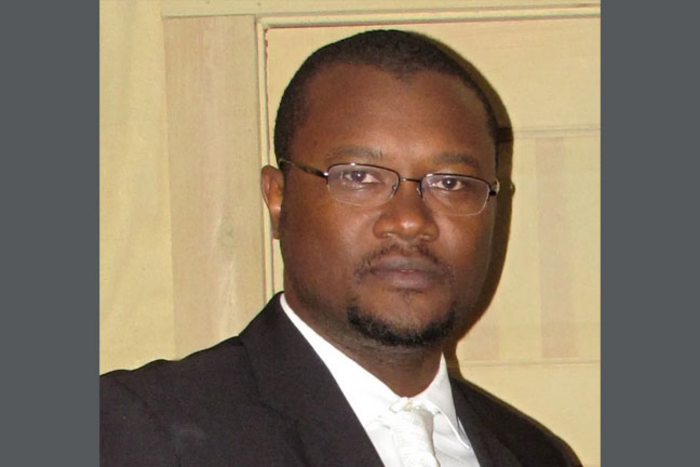Rensselaer Polytechnic Institute’s Moussa N’Gom, assistant professor of physics, applied physics, and astronomy, has devised a method to make communications between satellites and the ground more effective no matter the weather. In research recently published, N’Gom and his team used ultrafast, femtosecond lasers to cut through the clouds and rain that commonly cause losses in free-space optical communication (FSO).

Credit: Rensselaer Polytechnic Institute
Rensselaer Polytechnic Institute’s Moussa N’Gom, assistant professor of physics, applied physics, and astronomy, has devised a method to make communications between satellites and the ground more effective no matter the weather. In research recently published, N’Gom and his team used ultrafast, femtosecond lasers to cut through the clouds and rain that commonly cause losses in free-space optical communication (FSO).
“The lasers we use are so energetic that they change the environment in which they propagate,” N’Gom said. “The environment starts to change the laser that is changing it, and they have a light-matter interaction. It becomes a cascading effect that creates a long filament of light.”
The filament of light is accompanied by a shockwave, along the lines of a sonic boom. The laser filament propagates through clouds and the accompanying shockwave clears the space around the filament, providing an open pathway for visible light. N’Gom uses structured light, in the form of a spiral with a hole at its center, to propagate through the pathway.
“The Laguerre–Gauss beam travels through this empty space without interacting with the filament and is unobstructed by the clouds,” N’Gom said. “Normally, light travels in one, flat wave, but the light we create travels in a spiral. Imagine it like curling a flat piece of paper with scissors.”
On top of facilitating transmission through clouds, the spiral shape of the light also allows for more information to be transmitted.
The method presents a significant advance for FSO, which already has substantially higher capacity than radio frequency communication. Previous attempts to overcome the persistent obstacle of rain and clouds required substantial energy, large investments, or were less effective.
“Dr. N’Gom’s innovative research shows how to overcome a fundamental barrier in free-space optical communication,” said Curt Breneman, dean of the Rensselaer School of Science. “I expect free-space optical communication technology of this type to enable hyper-speed secure worldwide quantum communications.”
N’Gom was joined in research by doctoral students Tianhong Wang, Saad Bin Ali Reza, Finn Buldt, and postdoctoral associate Pascal Bassène. The work was funded by the National Geospatial Agency.
###
About Rensselaer Polytechnic Institute:
Founded in 1824, Rensselaer Polytechnic Institute is America’s first technological research university. Rensselaer encompasses five schools, over 30 research centers, more than 140 academic programs including 25 new programs, and a dynamic community made up of over 6,800 students and 104,000 living alumni. Rensselaer faculty and alumni include upwards of 155 National Academy members, six members of the National Inventors Hall of Fame, six National Medal of Technology winners, five National Medal of Science winners, and a Nobel Prize winner in Physics. With nearly 200 years of experience advancing scientific and technological knowledge, Rensselaer remains focused on addressing global challenges with a spirit of ingenuity and collaboration. To learn more, please visit www.rpi.edu.
Contact:
Katie Malatino
Sr. Communications Specialist
[email protected]
838-240-5691
For general inquiries: [email protected]
Visit the Rensselaer research and discovery blog: https://everydaymatters.rpi.edu/
Follow us on Twitter: @RPINews
Journal
Journal of Applied Physics
DOI
10.1063/5.0129902
Method of Research
Observational study
Subject of Research
Not applicable
Article Title
Structured light signal transmission through clouds
Article Publication Date
23-Jan-2023




